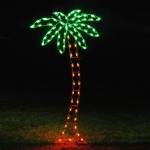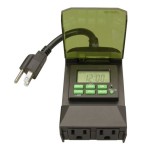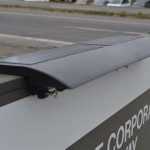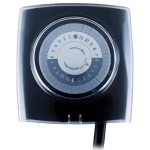Essential Aspects of Low Voltage Outdoor Lighting Cable Length
When designing and installing an outdoor lighting system, choosing the appropriate cable length is crucial for optimal performance and safety. Low voltage outdoor lighting cables provide the necessary electrical connection between lighting fixtures and the power source, and their length plays a significant role in system functionality and aesthetics.
Understanding Cable Length Requirements
The cable length required for an outdoor lighting system depends on several factors:
- Fixture Placement: Determine the distance between the power source and each lighting fixture.
- Cable Routing: Consider the path the cable will take, including any obstacles or obstacles.
- Burial Depth: Underground cables require a minimum burial depth to protect them from damage.
- Voltage Drop: Longer cables can result in voltage drop, so consider the distance and cable gauge to avoid dimming.
Calculating Cable Length
To calculate the necessary cable length, follow these steps:
- Measure the distance: Determine the length from the power source to each fixture, including the distance along the cable path.
- Add extra length: Add an additional 10-20% to the measured distance for flexibility and future adjustments.
- Consider burial depth: For underground cables, multiply the burial depth by two and add it to the total distance.
For example, if the distance from the power source to a fixture is 50 feet, the recommended cable length would be 55 feet (50 feet + 10% buffer). If the cable is buried 6 inches deep, an additional 1 foot (6 inches x 2) would be added, resulting in a total cable length requirement of 56 feet.
Selecting the Correct Cable Gauge
Along with cable length, choosing the appropriate cable gauge is essential. The gauge, indicated by AWG (American Wire Gauge), determines the thickness and current-carrying capacity of the cable.
- Thicker cables (lower AWG): Allow for higher current and reduce voltage drop over longer distances.
- Thinner cables (higher AWG): May be suitable for shorter distances or lower voltage applications.
Choosing the Correct Cable Type
Outdoor lighting cables come in various types, including direct burial, underground, and submersible. Select the type that best suits the specific installation conditions:
- Direct Burial: Designed for direct burial in soil, typically used for landscape lighting.
- Underground: Extends to conduit or other protective enclosures, suitable for underground power distribution.
- Submersible: Rated for underwater use, ideal for fountain or pool lighting.
Conclusion
Understanding the essential aspects of low voltage outdoor lighting cable length is crucial for designing and installing a safe and functional system. By carefully calculating cable length requirements, selecting the correct gauge and cable type, and ensuring proper installation, you can achieve optimal lighting performance and aesthetic appeal in your outdoor space.

Low Voltage Garden Cable 100m Length X 3 3mm Width Sold By Roll Lusion The Lighting

Techmar 15m Main Cable Spt 1 With 6 Connectors

Lumena 12v Cable Reel 2 Core 1 5mm

Landscape Lighting Wire Gauge Recommended Sizes For Installation

Cbl 25 14 2

Low Voltage Landscape Wire Outdoor Cable For Light Diffe Size

Southwire 100 Ft 12 2 Landscape Lighting Cable In The Department At Com

Low Voltage 12 2 Outdoor Landscape Lighting Wire Db Uv Rated Cable 500ft Com

Ground Cable

In Lite 3m Extension Cable Awg20
Related Posts







